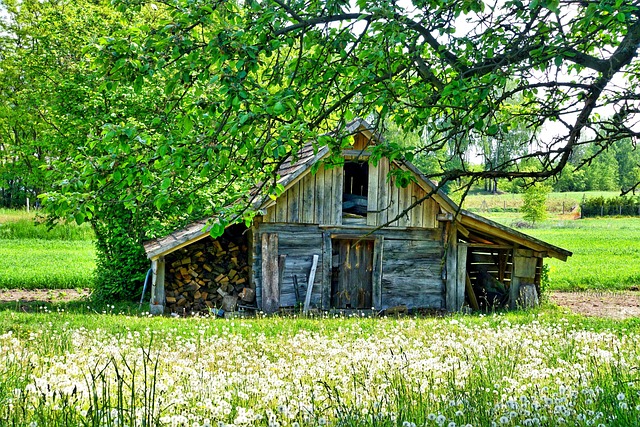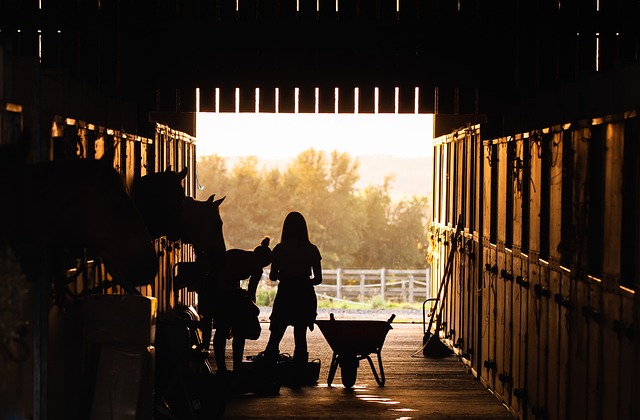In Shepparton, quality Farm Sheds are indispensable for agricultural operations, offering robust protection against the region's harsh climatic conditions. These sheds are constructed with durable materials like Colorbond steel to endure UV radiation and extreme weather, including heavy snowfall, hail, and strong winds. They maintain optimal internal temperatures for both crop storage and animal welfare, which is crucial for reducing waste and enhancing yields, thereby boosting the profitability of local farms. The sheds are equipped with advanced features such as ventilation systems that manage thermal mass to cope with Shepparton's extreme temperature variations. These features, along with strategic orientation, harness natural airflow, potentially lowering energy consumption and costs. Moreover, Farm Sheds integrate modern farming technologies, including automated feeders and manure management systems, which align with sustainable practices. Investing in these structures is a strategic move for farmers seeking to bolster the resilience and longevity of their agricultural enterprises in Shepparton's variable weather context.
shepparton’s ever-shifting weather patterns necessitate robust solutions for crop preservation and animal welfare. This article delves into the pivotal role of farm sheds in optimizing storage and shelter amidst the region’s diverse climatic challenges. Explore design strategies tailored to Shepparton’s conditions, ensuring your agricultural investments remain protected and productive year-round.
- Optimizing Crop Storage and Animal Shelter with Durable Farm Sheds in Shepparton's Climate
- Design Considerations for Farm Sheds to Withstand Shepparton's Variable Weather Conditions
Optimizing Crop Storage and Animal Shelter with Durable Farm Sheds in Shepparton's Climate

In Shepparton, a region known for its diverse and dynamic agricultural activities, optimizing crop storage and animal shelter is paramount to the success of local farmers. Farm Sheds play a critical role in this endeavor, serving as a protective barrier against the area’s challenging weather patterns. The Goulburn Valley boasts a climate with extreme temperature fluctuations; harsh summers and cold winters necessitate Farm Sheds that are not only robust but also versatile in design to cater to different agricultural needs. These structures are engineered to maintain optimal conditions for stored crops, protecting them from the intense UV rays during daylight hours and safeguarding against frost and moisture when temperatures plummet. Additionally, the durable construction materials used in Farm Sheds ensure they can withstand strong winds, heavy snowfall, and the potential for hail, which are common in Shepparton’s weather repertoire. By providing a secure environment, these sheds minimize crop damage and waste, directly impacting the yield and profitability of local farms.
Moreover, Farm Sheds are essential for animal welfare, offering a sanctuary that protects livestock from the elements year-round. The design of these sheds can be customized with features such as proper ventilation, insulation, and lighting to maintain a comfortable internal environment. This is crucial in managing the health and wellbeing of animals, reducing stress, and preventing disease, especially during extreme heat or cold snaps. With options for automated feeders, water troughs, and manure management systems, Farm Sheds evolve beyond mere shelter to become integral components of modern, efficient, and sustainable farming practices in Shepparton. Investing in high-quality Farm Sheds is a strategic move that contributes to the long-term viability and resilience of agricultural operations in this diverse climatic region.
Design Considerations for Farm Sheds to Withstand Shepparton's Variable Weather Conditions

In Shepparton, a region characterized by its variable weather conditions, the design of farm sheds must be meticulously planned to withstand the full spectrum of climatic challenges. These structures serve as critical shelters for agricultural machinery, livestock, and crops, necessitating robust materials and construction techniques. The roof configuration is paramount; it should be sloped to facilitate efficient water runoff during heavy rains and to ensure adequate drainage away from the building’s foundation. Additionally, materials such as Colorbond steel are often preferred due to their durability, low maintenance requirements, and ability to withstand harsh UV radiation, which is prevalent in Shepparton’s sunny climate.
Ventilation plays a key role in maintaining the integrity of stored items and livestock within farm sheds. Design considerations for ventilation systems should account for both cooling during summer heatwaves and protecting against frost in winter. Strategic placement of vents, combined with insulation properties that cater to thermal mass management, will ensure a stable internal environment regardless of the outdoor temperature. Furthermore, the shed’s orientation on the property can capitalize on natural breezes, reducing reliance on artificial cooling systems and lowering energy costs. Attention to these design elements is crucial for farm sheds to endure Shepparton’s variable weather conditions, ensuring longevity and functionality of the investment.
In conclusion, farm sheds in Shepparton play a pivotal role in safeguarding crops and providing secure shelters for livestock amidst its diverse weather patterns. The design of these structures, tailored to withstand the region’s variable conditions, is not just a matter of convenience but an essential aspect of sustainable agricultural practices. By investing in durable farm sheds that meet local climate demands, farmers can ensure the protection and preservation of their assets year-round. This commitment to robust infrastructure underpins the resilience of Shepparton’s farming sector and supports its capacity to thrive despite environmental challenges.
